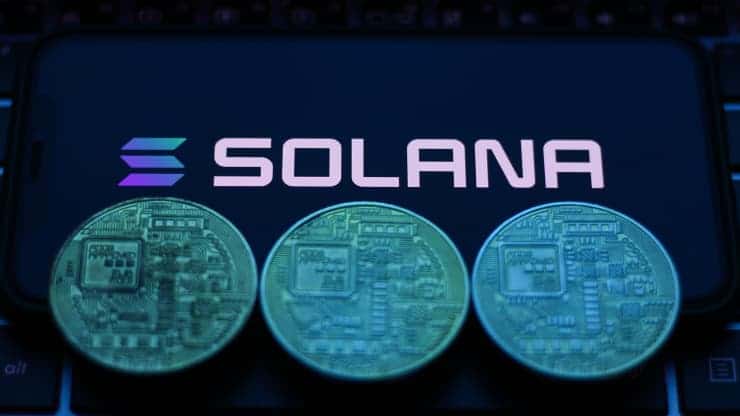
As demand for Ethereum, the most used blockchain network, has surged this year, other projects have emerged in an attempt to compete. Among them is Solana, a blockchain with a native cryptocurrency called SOL.
“Solana is the leading Ethereum competitor,” Matt Hougan, chief investment officer at Bitwise Asset Management, tells CNBC Make It. “I wouldn’t put all my chips on it, but I’m a big fan.”
Hougan isn’t alone — the overall market has shown support for Solana, too. This year, SOL is up nearly 17,000%, according to CoinGecko. Now the fifth-largest cryptocurrency by market value, SOL hit an all-time high of nearly $250 on Thursday, and currently, it has a market cap of over $70 billion.
There are a few reasons why Ethereum and Solana are often compared. For one, both have smart contract capabilities. Smart contracts, or collections of code that carry out a set of instructions on the blockchain, are crucial in running decentralized finance, or DeFi, applications and nonfungible tokens, or NFTs.
“A lot of the fastest-growing applications of crypto technology have been built on Ethereum and rely on the Ethereum blockchain to function,” Hougan says. “If you’re investing in Solana, you’re betting that its technical sophistication will help it leapfrog Ethereum.”
Though Solana has been especially buzzy lately, it’s important to research and understand the risks before investing. After all, financial experts generally deem all cryptocurrencies to be risky, volatile and speculative investments.
What’s Solana?
Solana officially launched in March 2020. Its founder, Anatoly Yakovenko, designed Solana to support smart contracts and the creation of decentralized applications, or dapps.
The blockchain operates on both a proof of history (PoH) and proof of stake (PoS) model. PoS allows validators to verify transactions according to how many coins they hold, while PoH allows for those transactions to be timestamped and verified more quickly, Yakovenko wrote in the Solana white paper.
In combination, “Solana can achieve more transactions per unit of time and has significantly lower fees,” compared to Ethereum, says Sam Trabucco, co-CEO of quantitative cryptocurrency trading firm Alameda Research.
Currently, Ethereum operates on a proof of work (PoW) model, where miners must compete to solve complex puzzles in order to validate transactions.
How does it compare to Ethereum?
Although Ethereum is older and more prominent, “Solana is a viable competitor,” says Brett Harrison, president of cryptocurrency exchange FTX US.
One reason is because Ethereum “is fundamentally limited in its capacity for global-scale applications due to the small number of transactions per second it can support,” Harrison says. Solana can support tens of thousands of transactions per second, while Ethereum can support roughly 13 transactions per second.
Solana also has “significantly lower fees,” Trabucco says. One of the main complaints about Ethereum is its frequently high transaction fees.
Ethereum still has its own advantages as well. “Ethereum has more users, more applications that already exist and more stability,” Trabucco says.
It also has a “massive ‘first mover’-adjacent advantage,” he adds, referring to the theory that the first to enter a market automatically has an edge over the competition.
Supporters of Ethereum say the blockchain will become more scalable, secure and sustainable after its Eth2 upgrade, slated for 2022, during which the network will shift to a PoS model as well. They also argue that Solana has a long way to go before it reaches the same level of quality and prominence that Ethereum commands.
Nonetheless, “I certainly think both likely have a place,” Trabucco says.
What are the risks?
Generally, financial experts warn to only invest as much as you can afford to lose in cryptocurrencies due to their significant risks.
Solana, in particular, has its own risks. First, it has appreciated substantially in a short period of time. Just like with other cryptocurrencies, the potential for large price swings should be considered and understood before investing. As quickly as it reaches a new high, it could go back down.
Critics also worry about Solana’s decentralization after it suffered a 17-hour outage in September, during which the network couldn’t process transactions. Solana developers later blamed something called “resource exhaustion,” Bloomberg reported.
All in all, “the risks are that [Solana] is competing with other technologically slick blockchains and blockchains with very large communities and established user bases,” Hougan says. “It’s like betting on a new and slick software company.”
























